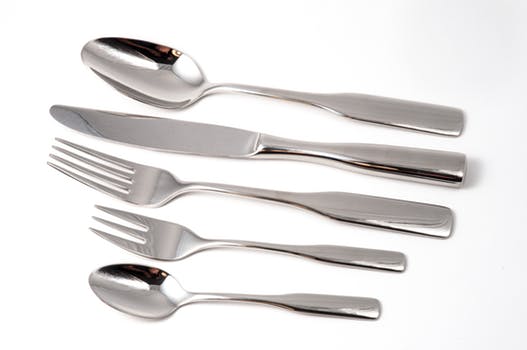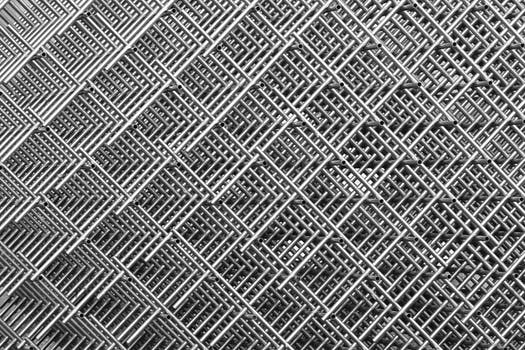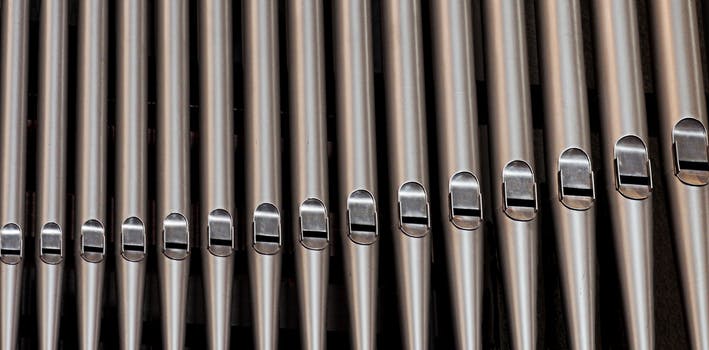
Stainless Steel in the Philippines: Properties, Families, and Uses
The widespread use of stainless steel in the Philippines and the rest of the world can easily lead us to think that the material has been used for millenniums, but that doesn’t seem to be the case. Unlike other common metals like iron, copper, and tin, stainless steel has only been around for a little over 100 years. In fact, it just reached the 100-year mark in 2013. Yet despite its late discovery, it has already out-performed many traditional materials which humans have been using since the dawn of time. As of today, stainless steel can be found in the least likeliest of items inside your household. From the little things like screws, utensils, and handles, to the big stuff like the inside of your aluminum windows, etc.
The success it has reached in such a short period of time speaks of many things, mainly of the undeniable importance of stainless steel. Many industries wouldn’t have progressed if not for this revolutionary material. A ridiculously large amount of stainless steel is used every single year to make items we use in our daily lives – 5 million metric tons, to be exact. In terms of net worth, the global stainless-steel market is steadily growing and is expected to be priced at USD 133.8 billion by the year 2025.
There are many reasons as to why stainless-steel holds so much importance – it’s amazing properties, many varieties, different applications – and that’s exactly what we’re getting into today. We’ll be talking about the many properties, families, and uses of stainless steel within the Philippines and beyond!

What Makes It Stainless?
We all know what stainless steel is – it’s a unique metal that doesn’t rust, discolor or corrode. We’ve learned about it during our early education and that’s what sales associates tell us whenever we ask what’s so special about stainless steel products.
What we don’t get to learn, however, is how it is able to have this property. One of the many questions that linger in our minds from time to time is: “What makes stainless steel, well, stainless?” If your curiosity has been killing you, then you’re in luck because we have a satisfying answer that’ll definitely bring you back to life.
Stainless steel in the Philippines is actually an iron alloy made with different combinations of manganese, silicon, nitrogen, carbon, nickel, chromium, and molybdenum. These elements, when exposed to oxygen from water and air, react and form a thin, stable, and invisible film of chrome oxide. It encapsulates the steel and makes it resistant to corrosive materials.
While all elements can take credit for giving stainless steel this amazing property, chromium is known to have the most dominant role. On top of its corrosion-resistant quality, the addition of chromium also gives the material a self-healing property where it can repair any mechanical or chemical damage given that oxygen is present. These properties can be further increased with the addition of more chromium and other elements mentioned above which are nickel, nitrogen, molybdenum.
To summarize, stainless steel is amazingly resistant to rust, discoloration, and corrosion because the elements present in it are reactive to oxygen and immediately forms a protective film upon contact. In short, oxidation, mainly thanks to chromium, is the answer.

Properties of Stainless Steel
Now, it being stainless isn’t the only reason this material is so important and ubiquitous. Stainless steel in the Philippines has more properties that make it ideal for many different applications and we’ve listed them all down below:
Corrosion Resistant
Since this is the most notable property of stainless steel and we’ve already explained it briefly, let’s get this out of the way. Stainless steel is highly resistant to all types of corrosion, with rust being the primary one. This is because of the many elements mixed with its iron base that allows it to form a protective layer.
High Strength
Stainless steel can have as much strength and hardness as regular steel and these properties can be adjusted by mixing in more or less of certain elements.
Low Weight
Usually, high-strength materials come in massive weights, but stainless steel is different. It has a great strength-to-weight ratio that also lowers costs for production and transportation.
Aesthetically Pleasing
The attractive appearance of stainless steel allows for the material to be used without much need for modifications. However, if it is needed, there are many methods that can give it a different finish. Any stainless-steel product can be processed to have a mirror finish, matte, textured, or brushed, which gives designers and manufacturers more opportunities.
Easy to Fabricate
During the early days of its discovery, stainless steel wasn’t so easy to mold and fabricate. But thanks to modern steel-making techniques, it can now be welded, machined, cut, fabricated, and formed into any shape and size as readily and easily as traditional steels.
Cryogenic Resistant
Each grade of stainless steel is different – there are some that can maintain their properties at cryogenic or extremely low temperatures. There’s also a specific family of stainless steel – something we’ll discuss later – that has higher tensile strength at lower temperatures as compared to ambient ones.
Heat and Fire Resistant
If there are stainless steel alloys that can withstand extremely low temperatures, there are also those that retain their properties at extremely high temps. Not only do these alloys retain their strength, they are also resistant to scaling. Moreover, among metallic materials used in structural applications, stainless steel has the best resistance to fire.
Easy to Clean
One of the reasons aluminum is so widely used in the food and medical industry is because it is extremely easy to clean. These industries need to have strict hygiene conditions that only aluminum can meet. Additionally, stainless steel is non-toxic, which is an important property that is also required in these fields.
Extreme Longevity
When you consider life cycle into the cost, stainless steel becomes the least expensive and most cost-efficient material option. It’s also safe to assume that a stainless-steel product will compete its service life, but only if properly and regularly maintained.
Recyclable
Stainless steel products don’t only have long service lives, they are also 100% recyclable, so there’s no need to concern yourself with disposal. Scraps can be stored for an infinite amount of time without their value ever going down. They can also be used to create new products; in fact, almost all stainless-steel products contain at least 50% to 80% recycled material.
Different Stainless-Steel Families
There are five main types or families of stainless steel in the Philippines and they are categorized depending on the ratio of the metals in the alloy. We’ve already mentioned the metals often infused to the iron base of stainless steel – manganese, silicon, nitrogen, carbon, nickel, chromium, and molybdenum. These elements are not always present in a single piece or sheet of stainless steel and their absence or presence can alter the properties of the end product, so it’s important to know which family they can be found in. That said, the five main families are:
Austenitic Stainless Steels
Austenitic stainless steels are the most popular and commonly used family in the world. More than 70% of all stainless fastener productions make use of this specific type of stainless steel. As for the composition, austenitic stainless steels contain no less than 16% of chromium and 6% of nickel.
The stainless steels in this family are non-magnetic, corrosion resistant, and have great weld-ability and formability. They can be further enhanced with the addition of other materials such as molybdenum, titanium, copper, and nickel. When and if modified, they can be used for high- and low-temperature applications.
Common applications for this are kitchen sinks, roofing and gutters, doors and windows, food processing equipment, ovens, chemical tanks, and heat exchangers.
Ferritic Stainless Steels
Ferritic stainless steels are low-cost alloys that contain little to no nickel. Their main alloying material is chromium which makes up almost 10% to 18% of the final product. They may also contain niobium, titanium, and molybdenum for improved creep resistance and toughness.
Overall, the stainless steels in this family are fairly moderate. They are magnetic and corrosion resistant but they have poor fabrication properties. What they excel at, however, is resistance to stress corrosion cracking, which is why they can be used for aggressive conditions especially when molybdenum is mixed into the alloy.
You’ll find that most fuel lines, vehicle exhausts, cooking utensils, and domestic appliances are made from this family of stainless steels for the properties that they have.
Martensitic Stainless Steels
The distinguishing features of martensitic stainless steels are their high carbon content and relatively low chromium content. Although chromium is their major alloying element, only 12% is present in them. There are versions that contain 16% but are still considered martensitic because they are also made of 2% nickel.
Since chromium content is low, these stainless steels have moderate corrosion resistance and poor weld-ability. However, they make up for this with high strength and hardness that is developed through heat treatment. Like ferritic stainless steels, martensitic stainless steels are also magnetic.
They aren’t the most popular of all families and are typically used for cutlery, spring, surgical instruments, and shafts.
Duplex Stainless Steels
Stainless steel alloys that have high levels of chromium and low levels of nickel fall under the duplex stainless-steel family. Their crystal structure is a unique mix of ferritic and austenitic stainless steels – hence the name. As such, they can have the properties of both families.
These were made as some kind of compromise or middle-ground for the two ‘pure’ types and offer unique property solutions. Many of their properties include high corrosion resistance, stress corrosion cracking resistance, toughness, strength, and formability.
Because of their unique properties, duplex stainless steels are often used for marine applications, desalination plants, food pickling plants, and off-shore oil and gas installations.
Precipitation Hardening Stainless Steels
Chromium and nickel are commonly found in precipitation hardening stainless steels and they develop extremely high tensile strength through heat treatment. They can be further enhanced by adding elements like copper, aluminum, and niobium. Their corrosion resistance is on par with the austenitic family, while their strength is usually higher compared to martensitic stainless steels.
They’re not the most commonly used family and are usually supplied in a solution treated condition. This allows them to be formed into intricate shapes through machining. After which, they are hardened through a low-temperature heat treatment that does not cause any distortion to the intended shape.
Precipitation hardening stainless steels are popularly used in the aerospace industry to create parts and components. Turbine blades, nuclear waste casks, and mechanical components may also be made from this type.

Common Uses of Stainless Steel
We’ve already enumerated a list of specific applications for the different families of stainless steel, so now we’ll zoom out a bit get more general. There are many industries that utilize this material. Almost every single one does, actually, but the ones that consume the most are:
Construction Industry
Modern architecture has made good use of stainless steel due to its flexibility, strength, corrosion resistance, and strength. It is often used in the exterior of high impact buildings and as handrails, backsplashes, and countertops for the interior. Its attractive finish, low-maintenance properties, and sustainability also contribute to its popularity in architecture. Moreover, it’s polished finish helps bring natural light into tall buildings which ultimately helps lower energy consumption.
Automotive/Transportation Industry
The minimal use of stainless steel in the automotive industry may change soon due to the environmental concerns and new emission reductions standards. Previously, it was only used to create parts such as trims and grills, but manufacturers may end favoring it in structural components, too. Aside from the automotive industry, the material is used in other forms of transportation such as ship containers and road tankers. It’s low weight and high strength makes it a popular choice for these applications as it allows for less cost for fuel.
Medical Industry/Field
We’ve previously mentioned that stainless steel in the Philippines is hygienic and easy to clean. These properties are important in the medical field where everything must be sterilized and spotless. The material is not only used to make medical, dental, and surgical instruments, it is also used in surgical implants.
Heavy Industry
Gas, oil, and chemical industries are all under this category and their environments demand materials that are resistant to heat and non-reactive to toxic substances much like stainless steel. It is formed into storage tanks, pipes, valves, and other important components. Renewable energy industries like solar, geothermal, hydro, and wind power also use this because it can stand the rigors of corrosive sea water and land environments.
Food Industry
Similar to how it is in the medical field, the food industry also needs materials that are non-toxic and hygienic, which is why they utilize stainless tell. When made into storage and packaging products, the material does not affect the food’s flavor and is not affected by the acidity of some ingredients.
Head to One Sky for your Stainless-steel Needs
With all its properties in uses, we can now fully understand the importance of stainless steel in the Philippines and other parts of the world. It may not be a prestigious material, but it is a practical one that has many applications without the downside of expensive costs. There are also a lot of types and grades to choose from and surely you can find one that will fit your needs.
Once you’ve figured out what family or type of stainless steel it is that you need, don’t think twice about heading to One Sky to get them! One Sky is one of the leading suppliers of stainless steel, as well as aluminum in the Philippines. Their products are all high-quality and there’s a wide variety to choose from. You can use them for all kinds of purposes and applications and you can guarantee that they will not stain or rust.
So, what are you waiting for? Head to One Sky now and satisfy your needs with the Metro Manila’s finest supplier of stainless steel.
See more of our products by clicking this page!